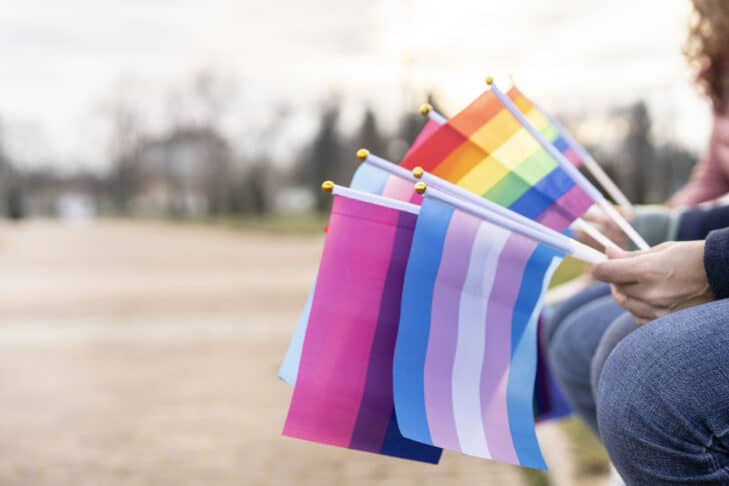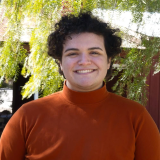I discovered I was transgender at the Western Wall. After several months of questioning my gender, it was finally time for my youth group trip to make our way down the winding streets of the Old City before the group split by gender as we approached the remains of the Second Temple. I was nervous. This experience was supposed to be momentous—people traveled from all across the world to be able to say their prayers in the holiest place in our tradition. As I approached the wall, I was almost trembling. But then, just as I touched it, I had a moment of clarity. What was I doing here? This side wasn’t where I belonged.
I began to cry tears of relief. My friends looked at me, afraid to interrupt what I assume they saw as a deeply religious experience. The joy I felt from this knowledge, not only that my suspicion that I was trans was correct, but that it was divinely okayed, overwhelmed me. That was the beginning of a journey spanning almost a decade that led me to where I am today.
It makes sense that the beginning of my gender journey coalesced during a Jewish ritual, because separating the Jewish and trans parts of myself would be impossible. A moment of holiness led me to see my own truth: my Jewishness opened me up to my transness, and my transness opened me up to the Divine. My experiences on both sides of the literal and proverbial mechitzah (a partition used to separate men and women) have shaped the way in which I live my life both as someone for whom no gender fits and as a Jew. Their joys often come as one: from being called to the Torah by a new name for the first time to meeting other trans Jews in unlikely places.
Working for Keshet, I hear again and again from people for whom this is true. Much of the feedback we receive about the LGBTQ+ and Ally Teen Shabbatonim conveys the relief and joy teens feel from being able to show up fully as queer, trans, Jewish young people. For instance, after attending our Midwest Shabbaton in April, B., age 17, shared with Keshet: “I have never felt more safe and affirmed and cared for than at the Shabbaton…and I finally feel like I belong in a community. I felt my Jewish and queer identities coming together and [feel] proud. I don’t really know who I call family, but I feel it at Keshet.” I would agree with her assessment, both as a former Shabbaton participant and as a Jewish trans person for whom that joy can be exceedingly rare at times.
There is a specific kind of happiness you experience when being seen and accepted for your full self. I needed to go to the Western Wall to see myself, though most people don’t need to go that far. Gender euphoria (the feeling of joy caused by being embraced by ourselves or others as the gender we are) is a light in the darkness. Though most of the popular conversation around transness centers gender dysphoria (the feeling of discontent, shame and/or anxiety caused by a dissonance between the way one’s gender is perceived by themself or others), that doesn’t give much in the way of useful information. Gender dysphoria tells you that you’re unhappy but doesn’t tell you why, leaving you with a malaise that has no clear cause or cure. Gender euphoria shows you what to do, helping you determine how you want to live.
I had a hard time understanding what these emotions meant when I first came out. I didn’t have the tools to process them, but the scaffolding provided by my childhood of Jewish learning often guided the way. The curiosity it fostered greatly informed my attitude, helping me explore what these strange new feelings meant without shame or guilt. Judaism also gave me a useful template with which to navigate gender itself. The idea that no question should be left unasked allowed me a greater depth and breadth of exploration and led to insights into who I was that I likely wouldn’t have otherwise found. I looked at what it meant to be a Jewish man and woman at various levels of observance and tried them, following the joy. Though I have since discarded those identities, the experience led to valuable insights both around my gender and the current hodge-podge of Jewish practices in which I feel most at home.
After being out for almost a decade, the biggest influx of anti-trans and anti-LGBQ+ legislation I’ve ever seen has taken over the nation. This year alone, legislatures in 49 states, including Massachusetts, saw a total of 549 anti-trans and anti-LGBQ bills. While over 100 of these bills have failed, 79 of them have passed with catastrophic effects. My trans friends and family in more conservative states can be denied health care legally due to doctors’ prejudices. They are increasingly not allowed to play sports in school, though most sports leagues have had trans-inclusive policies on the books since the early 2010s. They often cannot even use public restrooms without fear of retribution. Many of them are fleeing, but not everyone can or wants to. No one should need to flee their home.
It’s times like these when trans joy is a particularly radical act. Every June, the LGBTQ+ community comes together to commemorate Stonewall and the Christopher Street March. It’s often the only time people can dress in ways they feel comfortable, be open about who they are in public or be with their community while still in the closet. We celebrate June with joy and pride specifically because those in power have a vested interest in our misery. Our joy strips them of some of their power, and together we can do much more than we can alone. Weaponized joy is also the root of Jewish comedy; if we can survive and laugh at those who wished to do us in, we win.
This post has been contributed by a third party. The opinions, facts and any media content are presented solely by the author, and JewishBoston assumes no responsibility for them. Want to add your voice to the conversation? Publish your own post here. MORE



